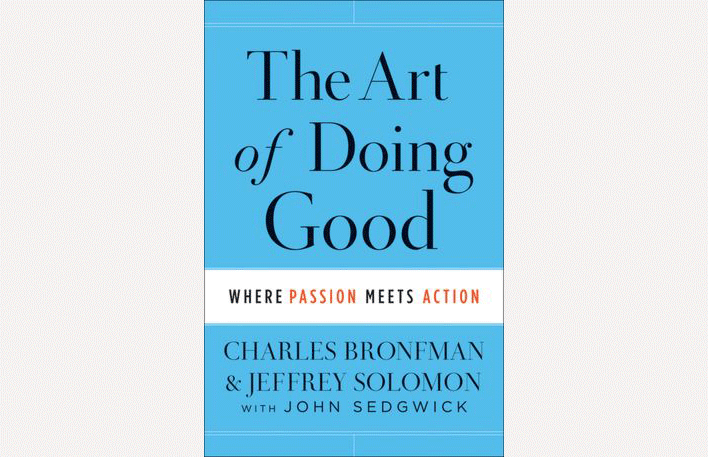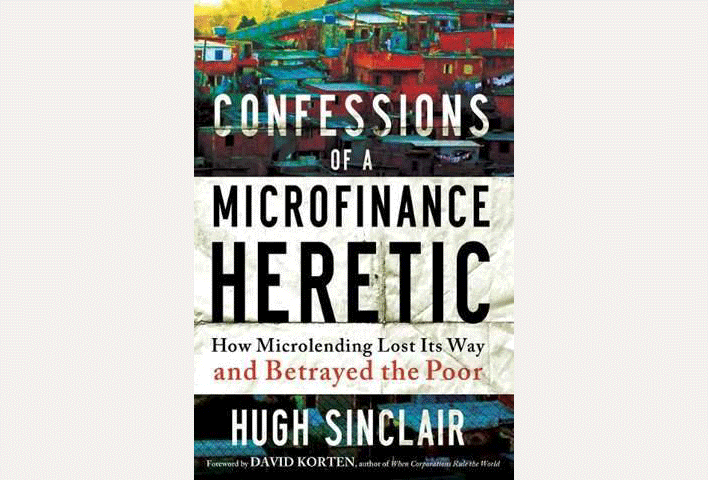The Art of Doing Good: Where Passion Meets Action
by Charles Bronfman and Jeffrey Solomon
Jossey-Bass, 2012
288 pp., $29.95

Social entrepreneurship is no simple undertaking, as Bronfman and Solomon illustrate in The Art of Doing Good. This companion to their 2009 The Art of Giving was written for those who wish to shepherd a growing nonprofit organization and “seek to change the world with their effort more than with their money.” (Money was the focus of their first book.) Bronfman and Solomon supplement their own experiences as philanthropic leaders with 18 case studies, including City Year, Harlem Children’s Zone (HCZ), the Gift of Life Bone Marrow Foundation, and Art for Refugees. The case studies illuminate the challenges of organizing, financing, and achieving goals in the nonprofit sector. The authors give counsel for each stage of organizational development—from inspiration to implementation and management—with tips on trusting creative intuition, assessing prospects for success, talking openly about fundraising, and knowing when to step aside. According to the authors, the most important (and trying) element in managing any nonprofit is finding high-quality staff. A trustworthy team is indispensable, as KaBoom founder Darrell Hammond learned when a former colleague’s attempted power-grab nearly pushed him out of the organization. Nonprofit leaders tend to be visionaries looking to solve entrenched social problems, but their success often depends on balancing their boldness with prudence, and learning to carefully steward the resources they raise. Deborah Kenny of the charter-school organization Harlem Village Academies purposefully limited growth to five schools, valuing oversight and accountability over growth. At HCZ, Geoffrey Canada combats “mission creep” by imposing strict measurement standards on all activities under his purview. Undergirding the how-to objective of this work is the knowledge that nonprofit endeavors are personal, often the work of a leader’s lifetime. The causes championed by these organizations are as diverse as the people who found and run them. Ultimately, The Art of Doing Good is as much a treatise on the crucial place of nonprofit organizations in civic and social life as it is a guide for aspiring leaders.
—Kate Bermingham
Confessions of a Microfinance Heretic: How Microlending Lost Its Way and Betrayed the Poor
by Hugh Sinclair
Berrett-Koehler Publishers, 2012
264 pp., $27.95

Near the end of his Confessions of a Microfinance Heretic, Sinclair compares microfinance to a favela. The dense, lawless slums of Brazil, he explains, are like the thicket of microfinance organizations, in that both teem with poor people hoping to rise, even though most inevitably will not. It’s a jarring analogy, and fitting for this tendentious book. After all, the idea behind microfinance should be uncontroversial: offer small loans with moderate interest rates to the poor in underdeveloped nations. The loans are supposed to serve as investment capital, allowing poor people to become entrepreneurs, repay the loans, and gain social mobility. Microfinance is now a $70 billion industry with 200 million clients worldwide. As such, it’s seen as a market-friendly form of international development. Sinclair seemed to think so. After a career in corporate finance and investment banking, he joined microfinance with great optimism. He was quickly disillusioned. Equal parts memoir, detective novel, and exposé, Confessions follows his years of working for microfinance institutions (MFIs) around the world. According to Sinclair, there are MFIs that make loans without reference to the borrower’s business plan, charge over 100 percent interest, lend to those who are simply buying consumer goods, and, sometimes, pressure clients into prostitution or suicide to escape their debts. Sinclair moved on to microfinance investment funds, only to find what he perceived as further corruption. Fed up, he turned against microfinance, loudly castigating the industry for a wide range of abuses—including a 2010 article that blasted microlender Kiva. (And even then, Sinclair concedes that there are many MFIs that are both ethical and moderately profitable.) Whatever one makes of this fiery polemic, it is delivered with sardonic British wit and world-weary anecdotes that make for lively reading.
—Mithun Selvaratnam
